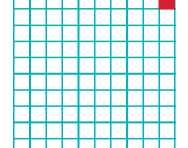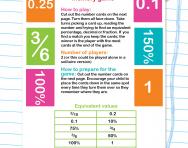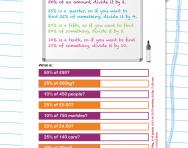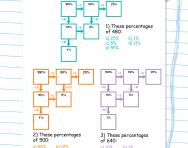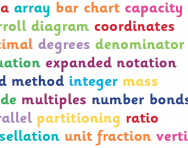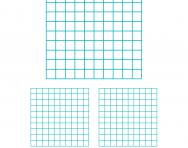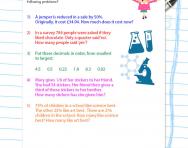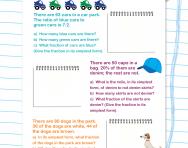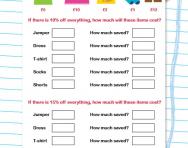Teachers' tricks for percentages
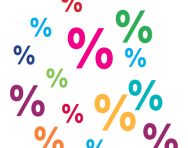
Start with a little percentages revision
Working out percentages might be something you happily bid farewell to the day you finished doing your own maths schoolwork, so needing a little refresher course on the actual calculations required isn't surprising. It’s vital to be clear about the (simple) maths involved before tackling it with your child, as you could risk confusing them further. So, ensure you’re confident in:

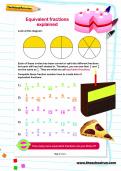
Start a unique learning programme!
- Weekly programme for each school year
- Worksheets sent direct to your inbox
- Keeps your child's learning on track
How to work out percentages
| To find 1% of a number... | divide it by 100 |
| To find 10% of a number... | divide it by 10 |
| To find 5% | find 10% then halve it |
| To find 25% of a number | divide it by 4 |
| To find 50% of a number | divide it by 2 |
| To find 20%, 30%, 40%, 60%, etc. | find 10% and then multiply by 2, 3, 4, 6, etc. |
For example: to find 30% of 90, find 10% (9) and then multiply it by 3 to find 30%: 9 x 3 = 27
The connection between fractions, decimals and percentages
The equivalencies your child needs to know are:
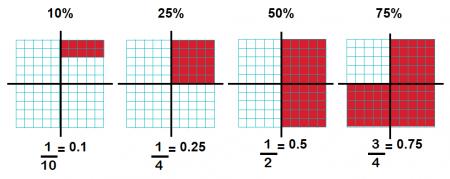
In their maths schoolwork they'll be asked to answer questions such as:
- What is 30% as a decimal? (0.3)
- 8/10 of my marbles are red. What percentage is this? (80%)
When answering questions like these, remind your child to use what they know, such as the number facts above, to help with what they don’t. If they know how to find 10% of a number (at speed), for example, they’ll know how to double and triple it to find 20% and 30% and most calculations will seem much easier to resolve.
Using food as a maths aid makes percentages 100% more appealing
What could be more motivation-inducing for any discerning child than making sure everyone gets an equal share of cake? Let them be responsible for working out the percentage each person needs, depending on how many people there are to share it out between. Then if one person decides they don’t want any, they’ll have to begin the calculating over again!
When starting to introduce the topic of percentages, a food-related, hands-on activity can be useful because they’ll be learning to see the relationship between division, fractions and percentages. Questions such as the following will help them to make these links:
- If I cut the cake into 10 equal pieces and eat three. What percentage have I eaten ?
- If I cut the cake into 5 equal pieces and give away 2, what percentage do I have left?
Shop the sales
If you can persuade your child to go clothes shopping, hitting the sales is a great demonstration of percentages at work in a real-life situation. Encourage them to help you work out how much something costs with a certain percentage off.
They can do the same with special offers at the supermarket too. Percentage-type offers on food can be misleading, but help them to spot these traps too! Draw their attention to '50% free' offers and ask them to calculate mentally how much the items cost after their reduction.
If shopping and children don't mix as far as you're concerned (fair enough!), be inspired by retail promotions to set them some percentage problems at home, instead. For example:
A box of chocolates is priced at £5. They are reduced in price by 30%. How much do they cost now?
Your child will need to first work out 30% of £5, by working out 10% and then multiplying it by 3 (10% of £5 is 50p, multiplied by 3 is £1.50). They will then need to subtract £1.50 from £5, which leaves £3.50. The box of chocolates has been reduced to £3.50.
Go liquid
Think of all the times in our households that we use liquids with our children: to wash-up, prepare drinks, have baths, etc. Encourage them to really ‘get a feel’ of what a percentage represents by demonstrating with everyday liquids and using the correct vocabulary (for example showing them a milk bottle is only 50% full and will need to be replenished or asking them to only fill a glass to about 80% capacity). Using their judging and estimating skills will really help them to visualise percentages, rather than learn them as a purely abstract maths phenomenon.

Give your child a headstart
- FREE articles & expert information
- FREE resources & activities
- FREE homework help
